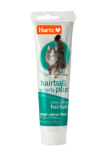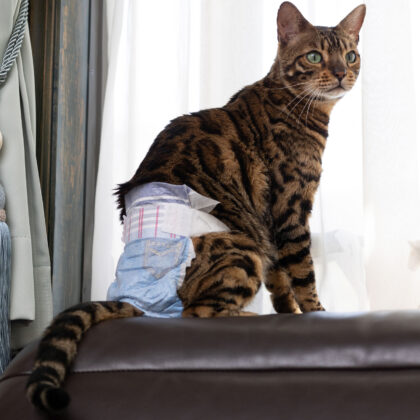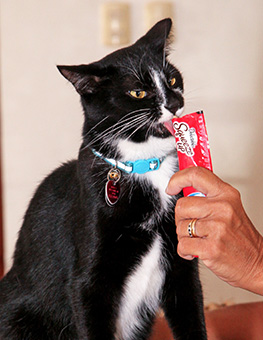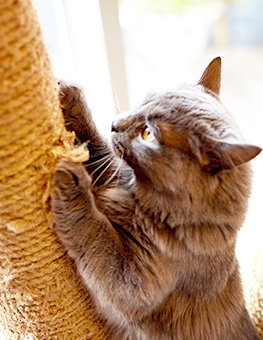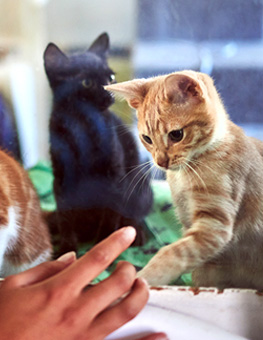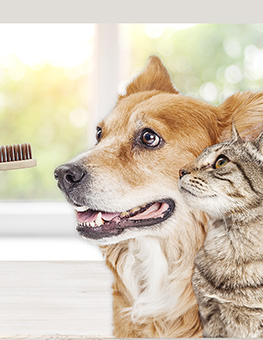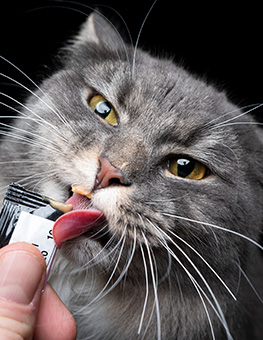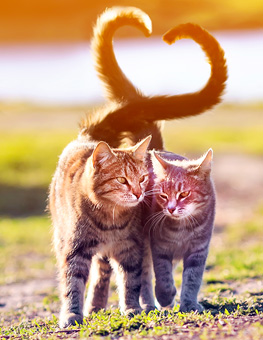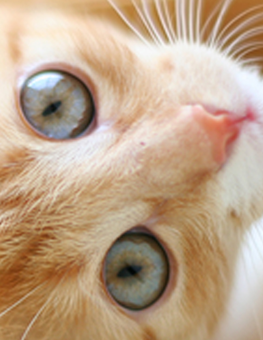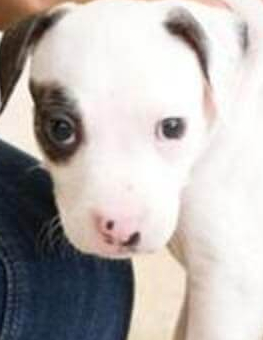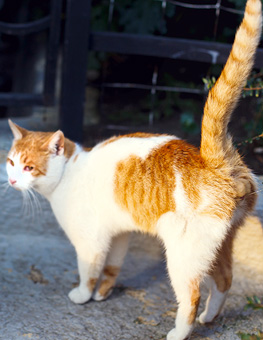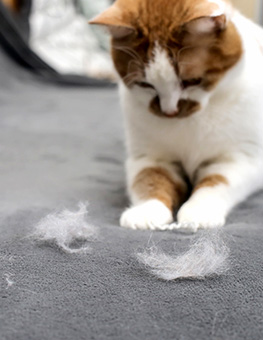Sticky Situation: How to Deal with Cat Hairballs
You love your cat, but you could probably do without his icky hairballs.
July is the worst month for hairballs so expect to spot them a little more often around the house. Read on for tips on how to spot the symptoms, reduce the number of, and clean up after, those yucky hairballs.
Hairball Symptoms
Hairballs aren’t just unpleasant for you – they can cause intestinal blockages and serious health problems for your cat. When your cat grooms himself, the tiny hook-like structures on his tongue can catch dead hair which is then swallowed. Most of the hair passes through the digestive tract, but some stray hairs stay in the stomach to form a hairball, which is eventually vomited up. Cats with longer hair such as Himalayans, Persians, and Maine Coons tend to have more hairballs. Kittens are less likely to get hairballs as they haven’t reached their full grooming potential yet.
When your cat coughs up a hairball, it can sound and look quite disturbing. Expect sounds of hacking, gagging, and retching for a few minutes. If you notice your cat experiencing these symptoms for a while, it could mean that a hairball is causing a life-threatening blockage. He may also have ongoing vomiting, lack of appetite, lethargy, constipation, diarrhea, or hard stool with hair sticking out. If you observe any symptoms of potential blockage, take your cat to the vet immediately.
Reduce Hairballs
Since cats spend 10 percent of each day grooming themselves, hairballs are just a fact of feline life. On average, cats cough up 3-4 hairballs a month, however, there are a few things that you can do to reduce the incidences of hairballs.
- Prevent your cat from excessively grooming himself. Try distracting him with an interactive toy such as the Hartz Just For Cats® Chirping Bird™ Cat Toy
- Brush your cat daily. The more fur you remove, the less fur he’ll lick up. Slicker brushes, such as the Hartz® Groomer’s Best® Slicker Brush for Cats are great for removing dead hair and de-shedding. If you don’t have time to brush, using a grooming wipe is a quick way to remove loose fur.
- Bathe your cat. If your cat doesn’t mind the occasional bath, bathing him every six weeks with Hartz® Groomer’s Best® Hairball Control Shampoo will provide hairball relief.
- Feed your cat a high fiber cat food to aid digestion. A high fiber diet will improve your cat’s coat, minimize the amount of shedding, and help hairballs digest easier.
- Give your cat a laxative that is specially formulated for hairballs such as Hartz® Hairball Remedy Plus Soft Chews & Hairball Remedy Plus Paste. These soft chew treats and paste are great supplements to a high fiber diet. Don’t have any remedies in the house? Mixing one teaspoon of olive oil into your cat’s food for three days will help. Olive oil works as a lubricant, has a laxative effect and is easier on digestion than petroleum.
Hairball Cleanup
Cleaning up a hairball is never fun as hairballs often create stinky messes around the house. Hairballs tend to cigar-like in shape since the hair has to pass through the esophagus. You should wait a few minutes after your cat coughs up a hairball to allow the hairball to solidify.
The more solid the hairball is, the easier it will be to cleanup. Using a paper towel, pick up the hairball being careful not to rub or mash it into the carpet or flooring. Place the hairball in a sealed plastic bag to eliminate odor and place in the trash. Remove any trace of the hairball with a pet-safe stain and odor remover such as The Hartz® Home Protection™ Stain & Odor Remover.



